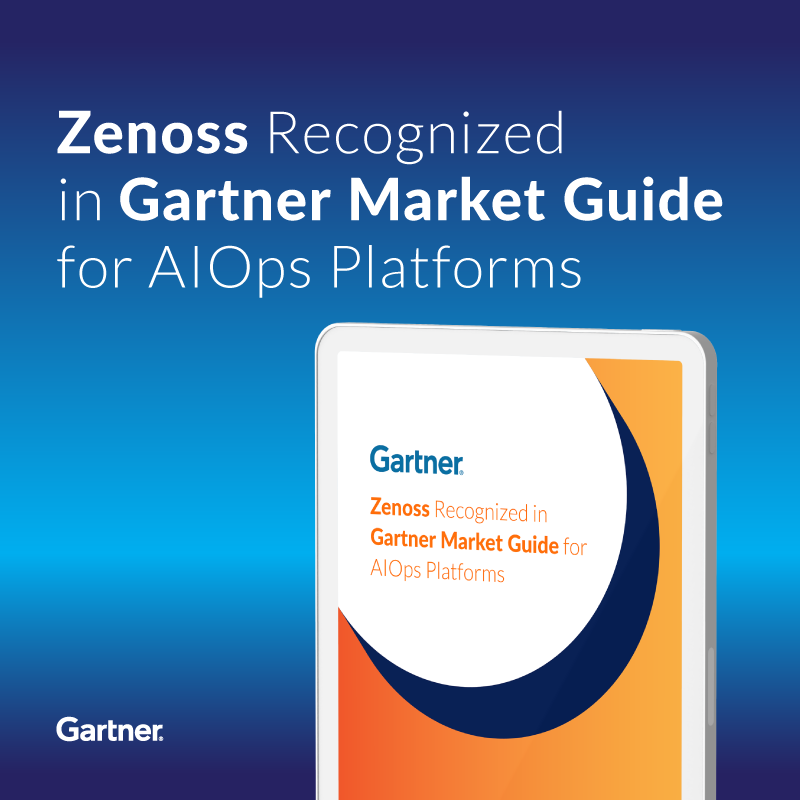
This Market Guide contains a lot of good information, and I think it’s worth highlighting some of the key points, so this will be the first in a series of blogs to dig a little deeper on those points. This post will review the basic premises - what the AIOps market is and where it’s going. However, before getting into that, it’s worth highlighting this strongly worded statement in the document. I’ve been working with Gartner for over 15 years, and I haven’t seen verbiage this strong very often. It’s even in a callout at the top of a page, not just buried in the next. Here’s what it says:
“There is no future of IT operations that does not include AIOps. This is due to the rapid growth in data volumes and pace of change (exemplified by rate of application delivery and event-driven business models) that cannot wait on humans to derive insights.”
That’s pretty powerful language. The previous Market Guide on AIOps did not include language like that. It seems there has been a tipping point since the previous guide was published. The takeaway seems to be that regardless of the potential risks and regardless of your industry or company size, your IT operations strategy needs to include an AIOps strategy. At a minimum, if you’re involved in IT operations, it’s probably something you should be familiar with. The reasons they offer are something we’ve been writing about for years, and the bottom line is what’s in the quote - (paraphrasing) scale and complexity in modern IT environments are past the point where human beings can manage them without the assistance of artificial intelligence.
Let’s get back to the basics of the document. First of all, AIOps stands for artificial intelligence for IT operations. The term was coined by Gartner, although it originally stood for something else, but that’s a story for another time. Here’s how the “market definition” section begins:
“AIOps platforms address I&O leaders’ need for operations support by combining data storage and analytics functionality to deliver relevant insights to the right personas based on data generated by IT in response to digital transformation.”
And the “market description” section begins with this:
“AIOps platforms enhance a broad range of IT practices, including I&O, DevOps, SRE and service management. However, the more focused outcomes are within the I&O domain and include anomaly detection, diagnostic information, event correlation, and root cause analysis (RCA) to improve monitoring, service management and automation tasks.”
At a high level, AIOps tools do three things — they collect data, they analyze data, and they produce insights — in the interest of accelerating problem resolution in IT operations.
The original (Generation 1) AIOps tools did/do this by essentially doing event correlation - relying solely on processed event data from arrays of monitoring tools. If you’re familiar with the saga of SIEM tools, Gen 1 AIOPs tools are like SIEM 2.0. For both tools, they never really lived up to their promise. It is simply too difficult to derive powerful insights from event data, the volume of which has grown at an alarming rate. More context is required for machine learning algorithms to produce reliable, meaningful results. So, the strengths of such tools are in the algorithms, while the key shortcomings are associated with the blind spots and come from a lack of context that can be attributed to having limited visibility into metrics, dependency data and other types of machine data.
Zenoss is a Generation 2 AIOps platform — it combines full-stack monitoring with analytics powered by machine learning. This means it resolves the number one problem other AIOps tools have experienced thus far — limited visibility and context due to the lack of cardinality in the data they're analyzing. Zenoss delivers a superior level of analytics capabilities because it is processing all data types, including metrics, dependency data, events, logs and streaming data. This provides unprecedented context and unprecedented acceleration of problem resolution.
In the next blog in this series, we’ll dig deeper into some of the other aspects of the Market Guide. We want to do everything we can to help organizations navigate the AIOps journey.









